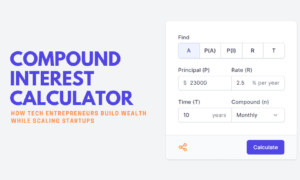Pinterest is more than just a platform for inspiration and ideas; it’s a powerful tool for driving sales. With over 400 million active users, Pinterest offers a unique opportunity for businesses to reach potential customers. This article will guide you on how to optimize Pinterest for sales, covering essential strategies to boost your presence and convert visitors into buyers.
Understanding Pinterest’s Unique Potential
Pinterest operates differently from other social media platforms. It’s a visual discovery engine, meaning users come to Pinterest to find new ideas and products. This mindset makes them more open to discovering and purchasing new items. Therefore, your first step is to understand how Pinterest works and how it can benefit your business.
Creating a Business Account
If you haven’t already, switch to a Pinterest business account. A business account gives you access to Pinterest Analytics, Promoted Pins, and other tools designed to help businesses grow. Here’s how to do it:
Go to Pinterest and log in.
Click on the three dots at the top-right corner.
Select “Upgrade now” under the “Account Settings” tab.
Follow the prompts to convert to a business account.
Optimizing Your Profile
Your profile is your business card on Pinterest. Make sure it’s attractive and informative. Use a high-quality logo for your profile picture and write a compelling bio that includes relevant keywords related to your business. Add your website link to drive traffic directly from your Pinterest profile.
Crafting the Perfect Pins
Pins are the heart of Pinterest. High-quality, visually appealing pins can significantly increase engagement and drive sales. Here’s how to create pins that stand out:
High-Quality Images
Use high-resolution images that are bright, clear, and visually appealing. Avoid cluttered backgrounds; simplicity often works best. Vertical images with a 2:3 aspect ratio (1000 x 1500 pixels) perform better on Pinterest.
Compelling Descriptions
Each pin should have a description that provides context and encourages action. Include relevant keywords naturally to improve your pin’s discoverability. Use a call to action (CTA) like “Shop now” or “Learn more” to guide users towards making a purchase.
Adding Keywords
Pinterest is a search engine. Using relevant keywords in your pin descriptions, titles, and board names helps your content appear in search results. Conduct keyword research to find terms that your target audience is searching for and incorporate them strategically.
Utilizing Rich Pins
Rich Pins provide more context about an idea because they show extra information directly on the pin. There are four types of Rich Pins: app, product, recipe, and article pins. For sales, product Rich Pins are particularly useful as they include real-time pricing, availability, and where to buy.
To enable Rich Pins, you need to add meta tags to your website and validate your Rich Pins through Pinterest’s validator. This process might seem technical, but it’s worth it for the added value Rich Pins provide.
Organizing and Managing Boards
Boards help organize your pins into categories, making it easier for users to find what they’re looking for. Here’s how to manage your boards effectively:
Creating Relevant Boards
Create boards that reflect different aspects of your business. For example, if you sell home decor, you could have separate boards for living room ideas, bedroom decor, kitchen essentials, and so on. Ensure each board has a clear, keyword-rich description.
Pinning Strategically
Don’t just pin your own content. Pinning high-quality content from other sources can make your boards more appealing and useful to your followers. However, make sure that the majority of your pins are your own products or content.
Using Sections
Pinterest allows you to create sections within boards. Use this feature to further organize your pins. For example, within a “Home Decor” board, you could have sections for “Wall Art,” “Furniture,” and “Lighting.” This makes it easier for users to navigate your boards and find what they’re looking for.
Engaging with Your Audience
Building a following on Pinterest requires more than just pinning great content. Engaging with your audience is crucial for long-term success.
Responding to Comments
When users comment on your pins, take the time to respond. This shows that you value their input and are interested in building a relationship with them. Engaging with comments can also increase the visibility of your pins.
Following Relevant Accounts
Follow other accounts that are relevant to your industry. This can help you stay updated on trends and also increases the likelihood of them following you back. Interacting with their pins by liking, commenting, and repinning can also boost your visibility.
Joining Group Boards
Group boards are collaborative boards where multiple users can pin. Joining relevant group boards can expose your pins to a wider audience and drive more traffic to your profile and website. Look for active group boards with a large following and request to join.
Leveraging Pinterest Analytics
Pinterest Analytics provides insights into how your pins are performing. Regularly reviewing these analytics can help you understand what’s working and what’s not, allowing you to refine your strategy.
Key Metrics to Monitor
Impressions:
How many times your pins were seen.
Saves:
How many times users saved your pins to their boards.
Clicks:
How many times users clicked on your pins to visit your website.
Conversions:
How many users made a purchase after clicking through to your website.
By monitoring these metrics, you can identify which pins and boards are driving the most engagement and sales, and adjust your strategy accordingly.
A/B Testing
A/B testing involves creating two versions of a pin with slight variations to see which performs better. Test different images, descriptions, and CTAs to find out what resonates most with your audience. This data-driven approach can significantly improve your pin performance over time.
Promoting Your Pins
While organic growth on Pinterest is valuable, using paid promotions can accelerate your success. Promoted Pins are regular pins that you pay to appear in the most visible areas of Pinterest.
Choose the pin you want to promote and set your bid.
Analyzing Ad Performance
Just like with organic pins, monitoring the performance of your Promoted Pins is crucial. Use Pinterest Ads Manager to track metrics such as impressions, clicks, and conversions. Adjust your targeting and bidding strategies based on this data to optimize your ad campaigns.
Keeping Up with Trends
Pinterest is a dynamic platform where trends can change rapidly. Staying updated on the latest trends can help you create relevant content that resonates with your audience.
Following Pinterest Trends
Pinterest Trends is a tool that shows you what’s currently popular on the platform. Use it to discover trending keywords, topics, and styles. Incorporate these trends into your pins and boards to stay relevant and attract more users.
Seasonal Content
Pinterest users often plan for events and holidays well in advance. Create seasonal content that aligns with these events. For example, start pinning Christmas-related content several months before December to catch early planners.
Conclusion
Optimizing Pinterest for sales requires a strategic approach, from creating compelling pins and engaging with your audience to leveraging analytics and promoting your content. By following these tips, you can transform Pinterest into a powerful sales channel for your business. Stay consistent, monitor your performance, and adapt to new trends to maximize your success on this visual discovery platform.



































